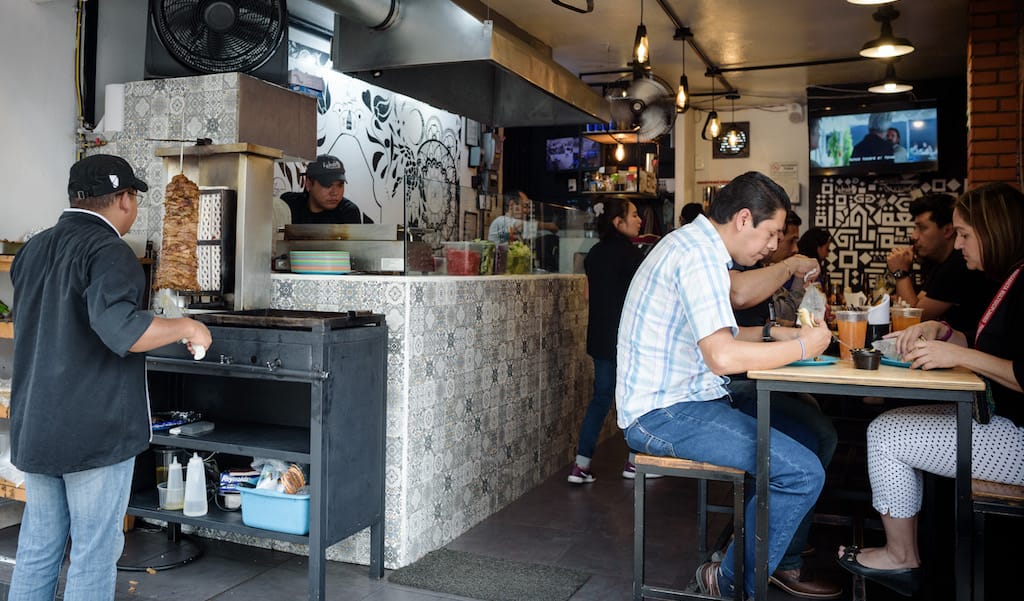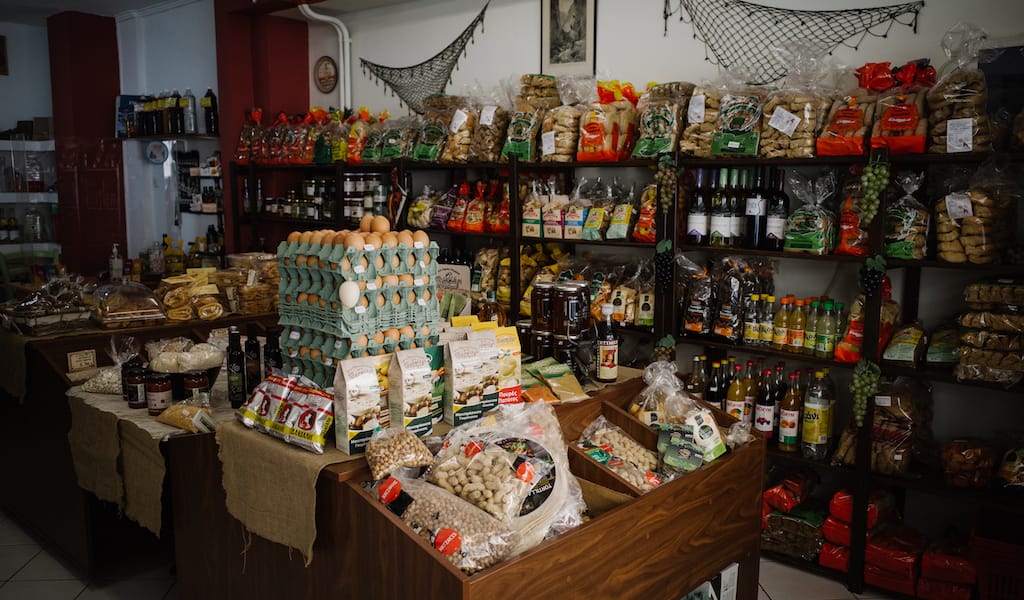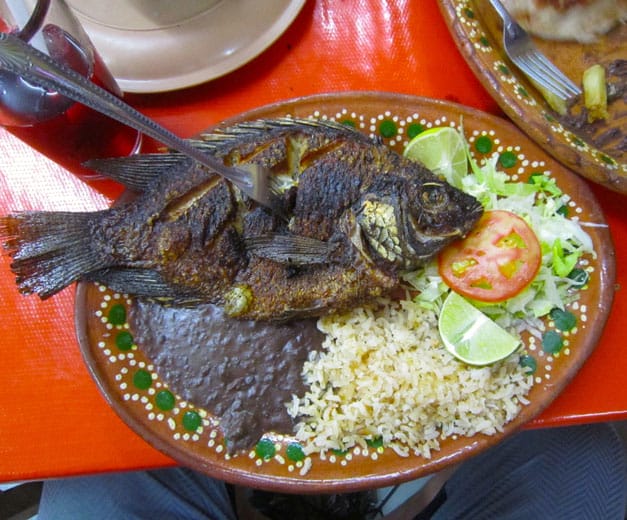Update: This spot is sadly no longer open.
Making mixiote takes some effort. On its home turf in Central Mexico, the dish is made by taking chicken, beef or mutton that is seasoned with pasilla and guajillo chili peppers as well as flavorings like thyme, cumin, bay leaves, oregano, onion and garlic, wrapping it in individual portions in maguey leaves and then slow-cooking the bundle in a pit, preferably overnight. But how about in Mexico City, a crowded metropolis where it’s not always possible to build a BBQ pit in the ground, or to obtain maguey leaves, which are both expensive and difficult to work with?
At Tacomix, a popular, family-run trio of street stands specializing in mixiotes, the owners have solved the problem by coming up with a new way to prepare the meat. “This is a family recipe handed down from my mom’s side. But we’ve made some changes to the recipe and the way we cook it over the years,” Marco Carmona, 31, the son of the founders of Tacomix, told us. Instead of in a pit, the Carmonas slow-cook their meat in large pots for some 12 hours over low heat, resulting in a flavor that Marco insists closely approximates the original version.
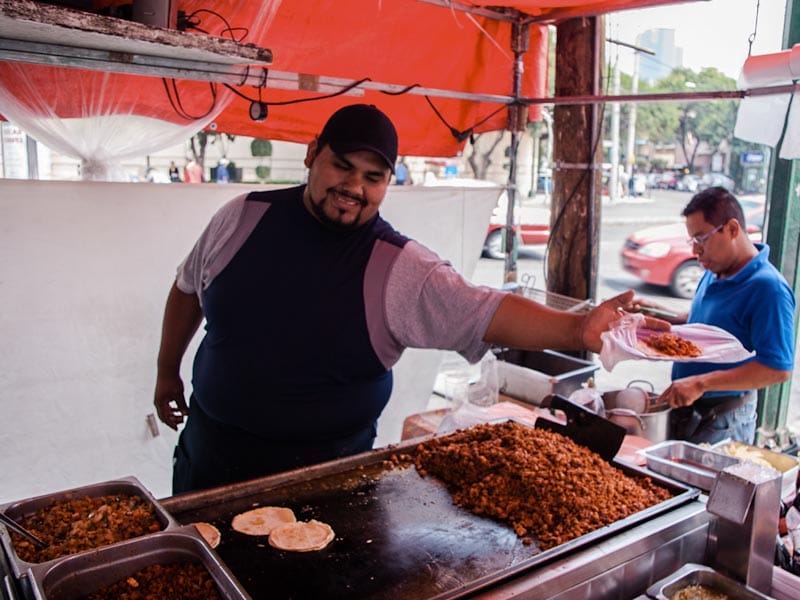
And we believe he’s right. At the original Tacomix location, in business in the same spot for 24 years, the menu consists simply of tacos filled with either mutton mixiote or bistec enchilado, a type of seasoned beef. (Other dishes, such as chicken and chorizo tacos, can be found at the other two locations.) But when both meats are so perfectly seasoned and flavorful, the menu really doesn’t need to be expanded. The tables at Tacomix are lined with buffet-style trays offering a variety of complimentary condiments to make the perfect taco: boiled and roasted chile de árbol salsas, beans, cooked nopales (cactus), sliced onions marinated in lime juice and habanero and manzano peppers – by far the hottest option. The tacos are good-sized; four to six are enough to satisfy most hungry customers. However, if you’re starving and want to try breaking the record of tacos eaten in one sitting at Tacomix – which currently stands at 24 – your meal, as well as your next, will be on the house.
The original eatery is located on the sidewalk of El Oro in Colonia Roma. On Saturdays, a tianguis is held on the same street, making the scene more colorful and full of life. Although the sidewalk is lined with food stands, Tacomix is easy to recognize for its neon sign, massive flat-screen TVs hung on the wall that forms the back of the eatery, and the large quantities of mutton and beef on the griddle. At the other end of the sidewalk, across from the griddle, an aguas frescas machine constantly pumps out jamaica, horchata and tamarindo-flavored aguas. As is typical of the street food scene in Mexico, hungry customers share tables in a communal dining experience.
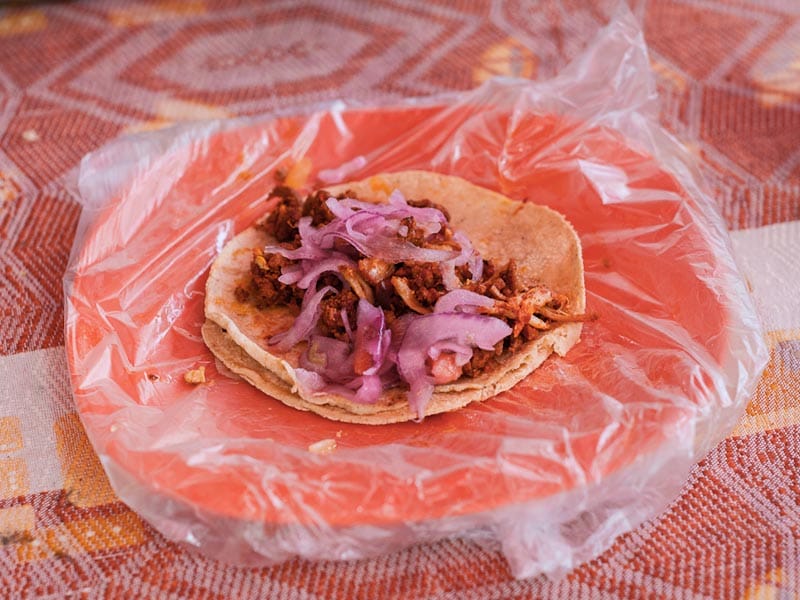
From its original street stand, Tacomix has expanded over the years to three locations around the city, all managed by the Carmona family. They also cater small and large parties and have become so popular that they have even been featured on Mexican television. Like many small food businesses in Mexico, Tacomix is a family enterprise in which all the members, including grandparents and kids, participate. “When I was a kid my dad had to set up the small stand we owned at that time by himself. We didn’t have a griddle. We had a small charcoal grill that was hauled along with all the food and family in the car,” Marco recalls. “But thanks to our customers, we now have several locations. My sister and I have big plans for the future, which include selling franchises. My parents worked hard for a long time and now they are able to take their grandkids on vacation while my sister and I take care of things. I’m doing this for the kids. We want a better life for them.”
This work ethic seems to be benefiting everyone. Through their efforts, the Carmonas may be creating a better life for their children, but they have also been making things easier for local eaters, whose cravings for mixiote previously could have only been satisfied by taking a trip out of Mexico City.
 May 8, 2019 Kebab Nation
May 8, 2019 Kebab Nation
At Culinary Backstreets, we tend to opt for tradition over trendy, street over chic. We […] Posted in Mexico City October 23, 2023 To Mitato tou Psiloriti
October 23, 2023 To Mitato tou Psiloriti
On Crete, endowed with fertile soil and an enviable climate, devotion to the island’s […] Posted in Athens June 23, 2015 CB on the Road
June 23, 2015 CB on the Road
Sitting on the boardwalk of Veracruz, about five or six hours east of Mexico City, we […] Posted in Mexico City
Published on August 23, 2013
Related stories
May 8, 2019
Mexico CityAt Culinary Backstreets, we tend to opt for tradition over trendy, street over chic. We delve into a city’s blind spots when it comes to local favorites. Taking that approach makes it too easy to dismiss new spots out of hand. So, if it weren’t for our friend Liz hounding us for months about a…
October 23, 2023
AthensOn Crete, endowed with fertile soil and an enviable climate, devotion to the island’s culinary traditions runs deep. This is even the case for people who have family ties to Crete but did not live there themselves, like Dimitris Katakis, who runs To Mitato tou Psiloriti, a small Cretan deli in Athens. In 1950 his…
June 23, 2015
Mexico CitySitting on the boardwalk of Veracruz, about five or six hours east of Mexico City, we watch the blinking lights of shrimp and fish boats in the farthest distance, knowing our next dinner is on its way. A day before, arriving from the bus, all we wanted was especially satisfying seafood, and the hunt brought…













































